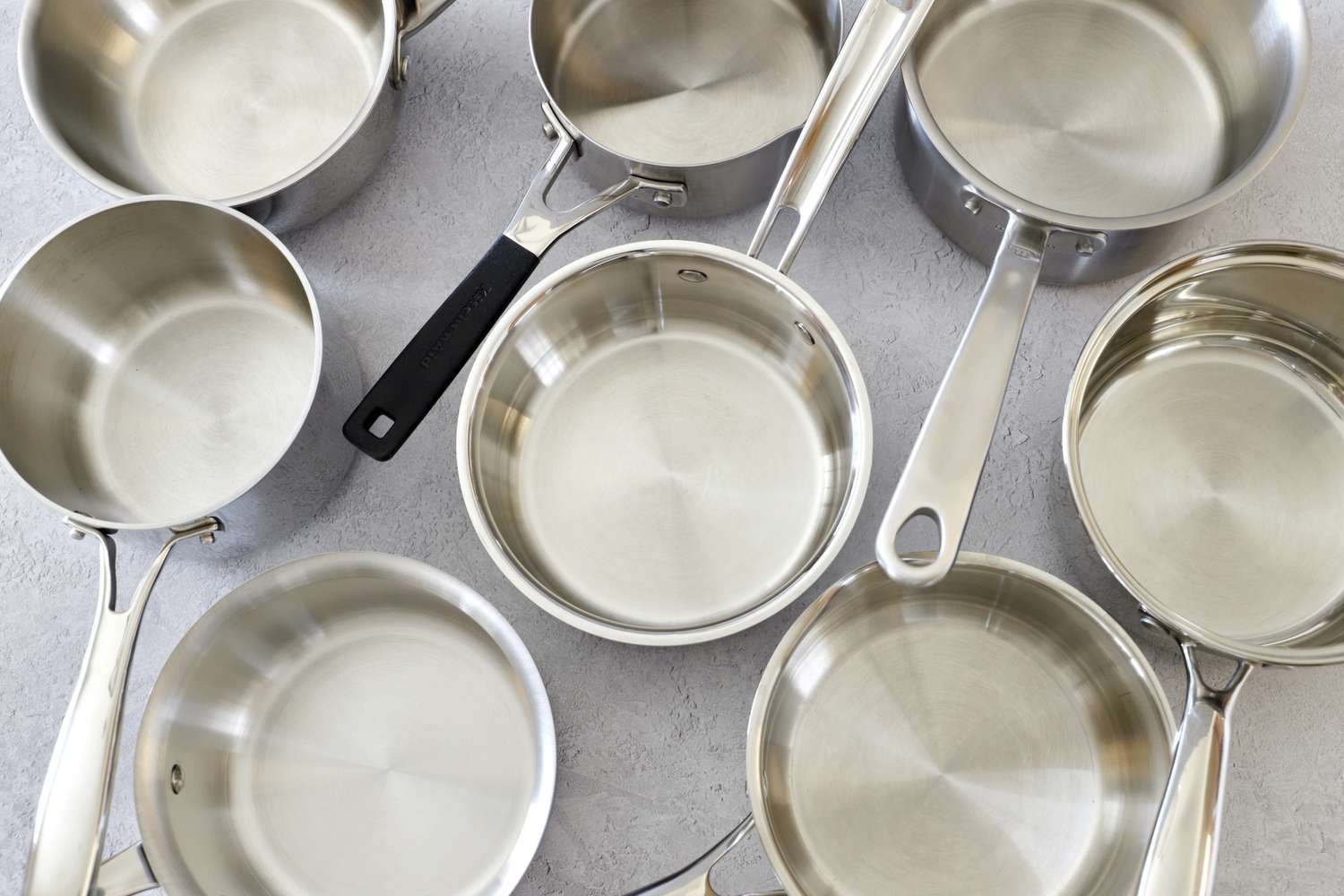The sauce pan is one of the most versatile and essential pieces of cookware found in any kitchen. Whether you’re a seasoned chef or a home cook, a good sauce pan can make all the difference in your culinary creations. This article explores the various aspects of sauce pans, from their design and materials to their uses and maintenance, providing a comprehensive guide to understanding and utilizing this indispensable kitchen tool.
Understanding the Sauce Pan
What is a Sauce Pan?
A sauce pan is a type of cookware characterized by its deep, round shape with high, straight sides and a long handle. It is designed for a variety of cooking tasks, including boiling, simmering, and making sauces. The high sides help contain liquids, making it ideal for tasks that require gentle stirring and even heating.
Design Features
- High Sides: The high sides of a sauce pan help prevent spills and splatters, making it suitable for cooking liquids and foods that expand during cooking.
- Long Handle: The long handle provides a secure grip and keeps your hand away from the heat source. Some sauce pans also feature a helper handle on the opposite side for added stability.
- Lid: Most sauce pans come with a fitted lid, which helps retain heat and moisture during cooking, making it perfect for simmering and braising.
Materials and Construction
Common Materials
- Stainless Steel: Stainless steel sauce pans are popular for their durability, resistance to rust, and non-reactive nature, making them suitable for cooking acidic foods.
- Aluminum: Aluminum sauce pans offer excellent heat conductivity, ensuring even cooking. Many aluminum pans are anodized or coated to prevent reactions with acidic foods.
- Copper: Copper sauce pans provide superior heat conductivity and precise temperature control, but they require more maintenance and are often lined with stainless steel to prevent reactions with food.
- Non-stick Coatings: Some sauce pans feature non-stick coatings, which make cooking and cleaning easier. However, they may not be suitable for high-heat cooking.
Construction
The construction of a sauce pan can significantly impact its performance. Look for features such as:
- Clad Construction: Clad or multi-ply construction involves bonding layers of different metals, such as stainless steel and aluminum, to combine the benefits of both materials. This enhances heat distribution and durability.
- Heavy-Gauge Material: A heavy-gauge material ensures even heating and prevents warping, especially important for pans used frequently or for high-heat cooking.
- Riveted Handles: Riveted handles are securely attached to the pan, providing durability and a firm grip. They are generally more reliable than welded handles.
Uses of a Sauce Pan
Boiling and Simmering
The deep and spacious design of a sauce pan makes it ideal for boiling water, cooking pasta, and simmering soups and stews. The high sides help contain the liquid, reducing the risk of spills.
Making Sauces
As the name suggests, sauce pans are perfect for making sauces. The even heat distribution ensures that sauces cook consistently, while the high sides allow for easy stirring without splattering.
Cooking Grains and Legumes
Sauce pans are excellent for cooking grains such as rice, quinoa, and couscous, as well as legumes like lentils and beans. The tight-fitting lid helps retain steam and heat, ensuring that the grains and legumes cook evenly.
Braising and Stewing
The versatility of a sauce pan extends to braising and stewing. The high sides and even heating make it suitable for slow-cooking meats and vegetables, allowing flavors to meld together beautifully.
Choosing the Right Sauce Pan
Size and Capacity
Sauce pans come in various sizes, typically ranging from 1-quart to 4-quart capacities. The right size for you depends on your cooking needs:
- Small (1-2 quarts): Ideal for small tasks like melting butter, heating sauces, or cooking a single serving of grains.
- Medium (2-3 quarts): Versatile and suitable for most home cooking tasks, including making sauces, boiling eggs, and cooking vegetables.
- Large (3-4 quarts): Great for cooking larger quantities, such as preparing soups, stews, and pasta for a family.
Material and Coating
Consider the material and coating based on your cooking preferences:
- Stainless Steel: Best for durability and cooking acidic foods.
- Aluminum or Copper: Ideal for precise temperature control and even heating.
- Non-stick Coating: Perfect for easy food release and cleaning, but avoid using metal utensils to prevent scratching.
Handle and Lid
Ensure the handle is comfortable and securely attached. A lid that fits well is crucial for retaining heat and moisture. Look for sauce pans with ergonomic handles and lids with steam vents for better cooking control.
Caring for Your Sauce Pan
Cleaning
Proper cleaning ensures the longevity of your sauce pan:
- Stainless Steel and Aluminum: Hand wash with warm, soapy water and avoid using abrasive cleaners. For stubborn stains, use a mixture of baking soda and water or a specialized stainless steel cleaner.
- Non-stick: Use a soft sponge and mild detergent. Avoid abrasive sponges and high-heat dishwashing cycles that can damage the coating.
- Copper: Clean with a copper cleaner or a mixture of vinegar and salt to maintain its shine. Avoid using harsh chemicals that can tarnish the surface.
Maintenance
Regular maintenance keeps your sauce pan in top condition:
- Avoid Overheating: Prevent warping and damage by not overheating the pan. Always preheat gently and avoid using high heat unless necessary.
- Use Proper Utensils: Use wooden, silicone, or plastic utensils to prevent scratching, especially for non-stick and copper pans.
- Store Properly: Store sauce pans in a dry place and avoid stacking heavy items on top to prevent dents and scratches.
Conclusion
A sauce pan is an essential tool in any kitchen, offering versatility and efficiency for a wide range of cooking tasks. Understanding the different materials, sizes, and uses can help you choose the right sauce pan to meet your culinary needs. With proper care and maintenance, a high-quality sauce pan can provide years of reliable service, making it a worthy investment for both amateur and professional cooks.


